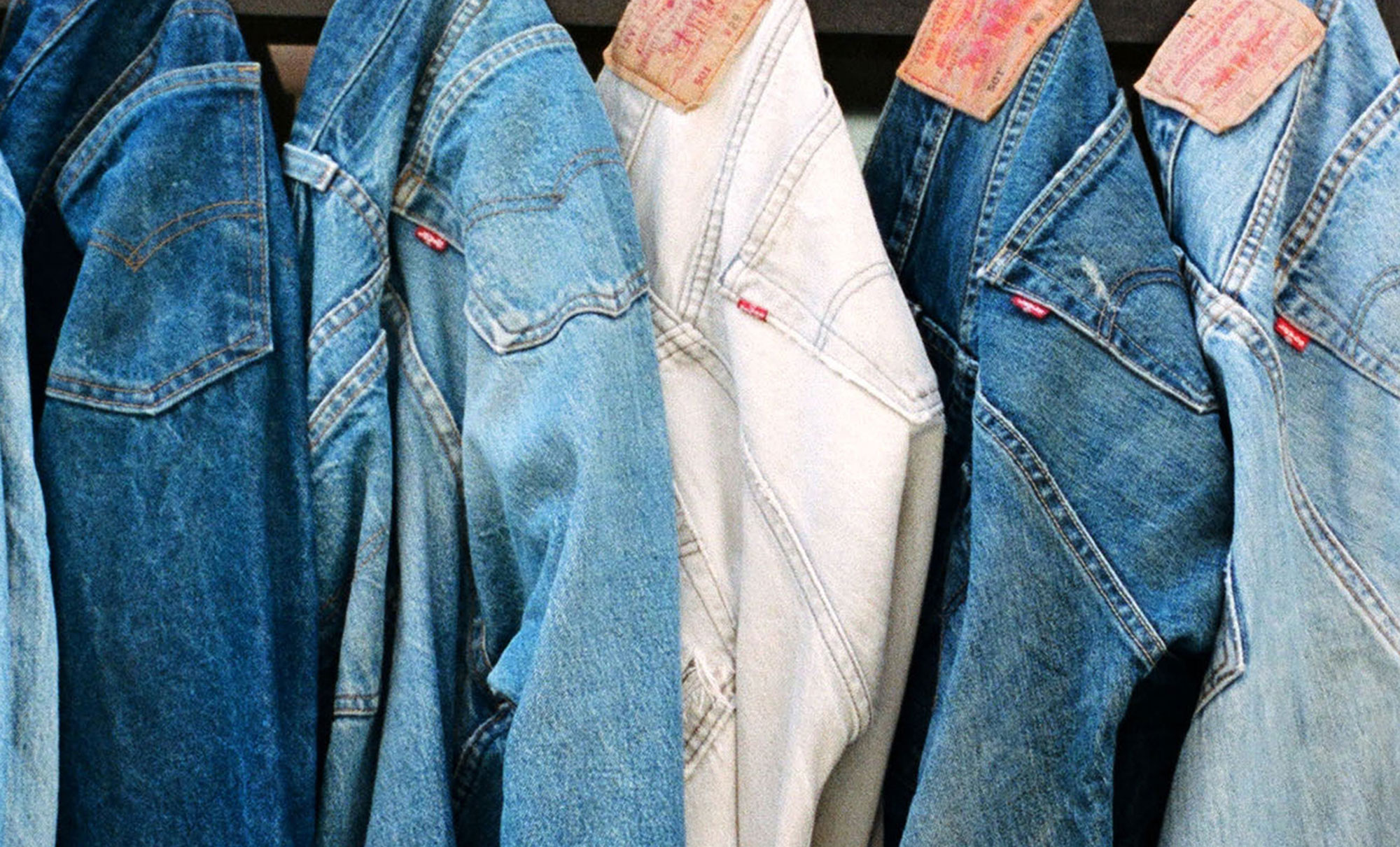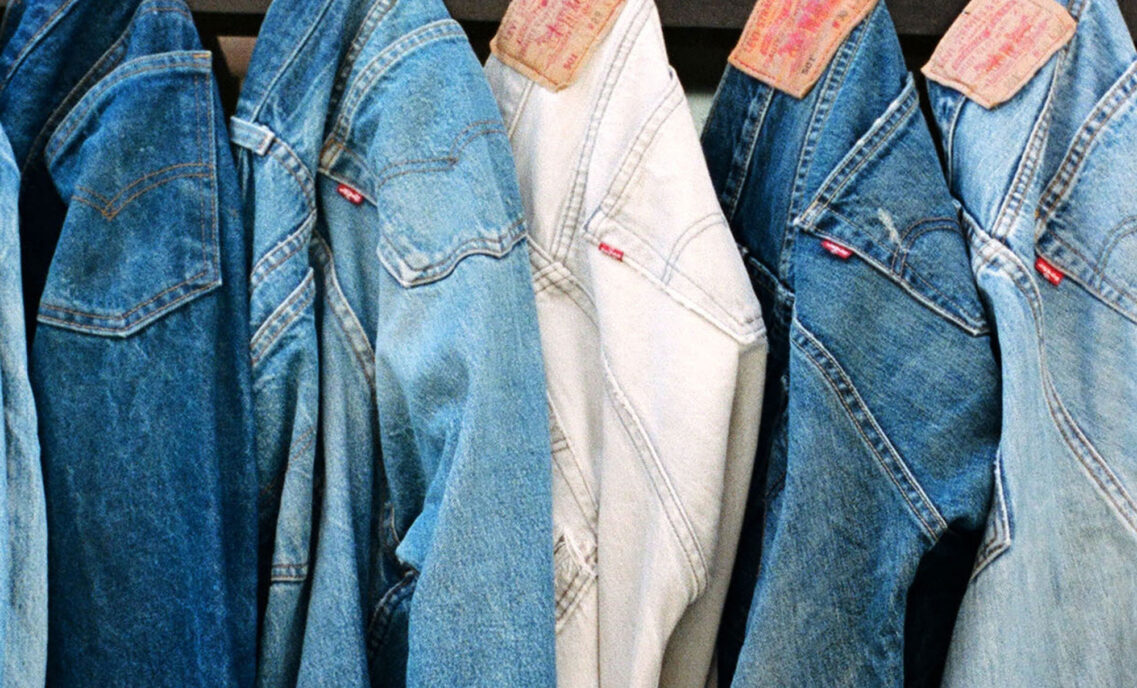Walk into just about any secondhand, vintage or thrift shop and it’s likely you’ll find yourself staring down a rack of Levi’s® denim. At Levi Strauss & Co., we believe the value of our iconic products only increases over time, because it’s what they are made for — they’re built to last, handed down and worn by generations of consumers. That’s why consumers from the U.S. and around the world searching for the timeless jeans of another era turn to our products over and over again.
So, how do we design products with future generations in mind?
We heard from Paul Dillinger, LS&Co.’s global head of Design Innovation, to learn what it means to be a Levi’s® designer today who’s acutely interested in designing for a product’s second life — a perspective he calls “designing for future vintage.” Read on to see what he said.
Editor’s note: This interview was adapted from a panel discussion at the Global Fashion Summit 2023 in Boston, Massachusetts, hosted by the Global Fashion Agenda.
Let’s start with the obvious. What do you mean when you say designing for future vintage?
It means exactly that — designing products with the specific goal of having them be worn and loved by people for decades. Designing great “future vintage” means redefining the role of the designer and the intention behind our creativity, shifting from a design philosophy focused on immediacy and trend to one grounded in longevity, product integrity and lasting value. Creating great future vintage requires the designer to think about their product’s relevance for the initial consumer, as well as the needs of the second or third generation consumer who might buy our jeans at a swap meet or secondhand store 10 years from now.
What does that shift in intention require a designer to do differently?
Through this lens of the secondary consumer, we have to make different decisions around materiality, product construction, material combinations and more. For example, we make product assembly and design aesthetic decisions that prioritize lasting value over trend immediacy. Those efforts to introduce circularity to the product, like including recycled materials and fibers, ensure they have the same, or better, tear and tensile strength when compared to its virgin counterpart — i.e., a non-recycled material.
What does circularity have to do with future vintage? And, specifically, why do you need to introduce circularity if the product is intended to last for decades?
There’s the idea that you can either design for longevity or for circularity, but not both, because of the durability challenges often found in recycled fibers. This concept of designing for future vintage requires you to do both. And while they are two different design processes, they are not inherently opposed to each other. For example, we released the Circular 501® jean to meet all of the high product integrity standards of Levi’s® 501® jeans, but we also introduced materials like Renewcell’s Circulose® and a single fiber strategy to showcase that technology does exist to recycle today’s clothing into durable, lasting products. We even went so far as to then recycle this garment for a second, third and fourth time to make sure those recycled fibers could in fact be made new over again.
The Circular 501® jean proved that a recycled fiber can hold up to quality and product integrity standards. So, now we need to look at where that technology provides the most value. A product like a pair of jeans, designed to stand the test of time, maybe doesn’t need to be produced with recycled fibers — but what about a basic T-shirt? What if something that we know will need to be replaced could be made new time and time again? That’s where we will begin to unlock technology fit for purpose — deciding what products should always be designed with future consumers in mind, and those that will be best leveraged in a circular loop.
How do you teach this mindset to ensure the next generation of Levi’s® designers rises to the challenge?
It’s really about two things: timeless styles and product quality. While it’s important to stay on top of the latest trends or novelty seasonal colors, it’s equally important to study the consumer to understand not only what they buy, but what they wear. They might buy into a novelty trend or seasonal color, but what item in their closet do they keep going back to and can’t live without? What pieces do they really love? If we really listen to the consumer and understand the product attributes that make items like the 501® jean so essential and beloved, we’re better equipped to design for lasting value and to build longer-term relationships with our consumers.
Then, we have to ensure those items live up to the high standards set by our Product Integrity team. We need to design for durability, with the expectation that every product we make will be able outlast the first ownership cycle and eventually become great future vintage.
Want to learn more? Check out the latest iteration of the Levi’s® Buy Better, Wear Longer campaign to find out more about LS&Co.’s commitment to durability and quality.







